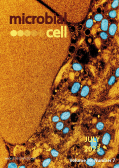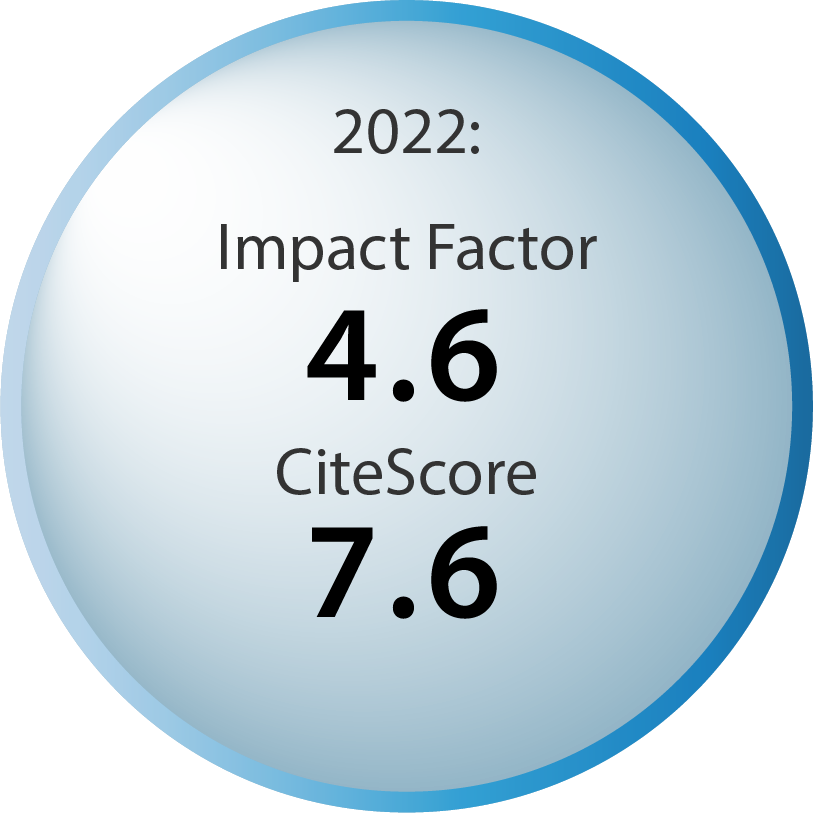Table of contents
Volume 10, Issue 7, pp. 141 - 156, July 2023
Cover: Colorized transmission electron microscopic image of mpox virus particles (teal), which were found within an infected cell (brown), having been cultured in the laboratory. Image by the National Institute of Allergy and Infectious Diseases (NIAID), USA, captured at the NIAID Integrated Research Facility in Fort Detrick, Maryland, USA; image modified by MIC. The cover is published under the Creative Commons Attribution (CC BY) license.
Enlarge issue cover
Ribose 5-phosphate: the key metabolite bridging the metabolisms of nucleotides and amino acids during stringent response in Escherichia coli?
Paulina Katarzyna Grucela, Tobias Fuhrer, Uwe Sauer, Yanjie Chao and Yong Everett Zhang
Viewpoint |
page 141-144 | 10.15698/mic2023.07.799 | Full text | PDF |
Abstract
The bacterial stringent response and its effector alarmone guanosine penta- or tetra – phosphates (p)ppGpp are vital for bacterial tolerance and survival of various stresses in environments (including antibiotics) and host cells (virulence). (p)ppGpp does so by binding to its numerous target proteins and reprograming bacterial transcriptome to tune down the synthesis of nucleotides and rRNA/tRNA, and up-regulate amino acid biosynthesis genes. Recent identification of more novel (p)ppGpp direct binding proteins in Escherichia coli and their deep studies have unveiled unprecedented details of how (p)ppGpp coordinates the nucleotide and amino acid metabolic pathways upon stringent response; however, the mechanistic link between nucleotide and amino acid metabolisms remains still incompletely understood. Here we propose the metabolite ribose 5’-phosphate as the key link between nucleotide and amino acid metabolisms and a working model integrating both the transcriptional and metabolic effects of (p)ppGpp on E. coli physiological adaptation during the stringent response.
GFP fusions of Sec-routed extracellular proteins in Staphylococcus aureus reveal surface-associated coagulase in biofilms
Dominique C. S. Evans, Amanda B. Khamas, Lisbeth Marcussen, Kristian S. Rasmussen, Janne K. Klitgaard, Birgitte H. Kallipolitis, Janni Nielsen, Daniel E. Otzen, Mark C. Leake and Rikke L. Meyer
Research Articles |
page 145-156 | 10.15698/mic2023.07.800 | Full text | PDF |
Abstract
Staphylococcus aureus is a major human pathogen that utilises many surface-associated and secreted proteins to form biofilms and cause disease. However, our understanding of these processes is limited by challenges of using fluorescent protein reporters in their native environment, because they must be exported and fold correctly to become fluorescent. Here, we demonstrate the feasibility of using the monomeric superfolder GFP (msfGFP) exported from S. aureus. By fusing msfGFP to signal peptides for the Secretory (Sec) and Twin Arginine Translocation (Tat) pathways, the two major secretion pathways in S. aureus, we quantified msfGFP fluorescence in bacterial cultures and cell-free supernatant from the cultures. When fused to a Tat signal peptide, we detected msfGFP fluorescence inside but not outside bacterial cells, indicating a failure to export msfGFP. However, when fused to a Sec signal peptide, msfGFP fluorescence was present outside cells, indicating successful export of the msfGFP in the unfolded state, followed by extracellular folding and maturation to the photoactive state. We applied this strategy to study coagulase (Coa), a secreted protein and a major contributor to the formation of a fibrin network in S. aureus biofilms that protects bacteria from the host immune system and increases attachment to host surfaces. We confirmed that a genomically integrated C-terminal fusion of Coa to msfGFP does not impair the activity of Coa or its localisation within the biofilm matrix. Our findings demonstrate that msfGFP is a good candidate fluorescent reporter to consider when studying proteins secreted by the Sec pathway in S. aureus.










